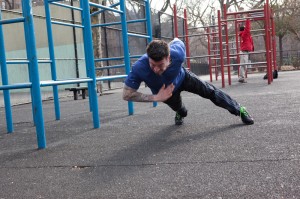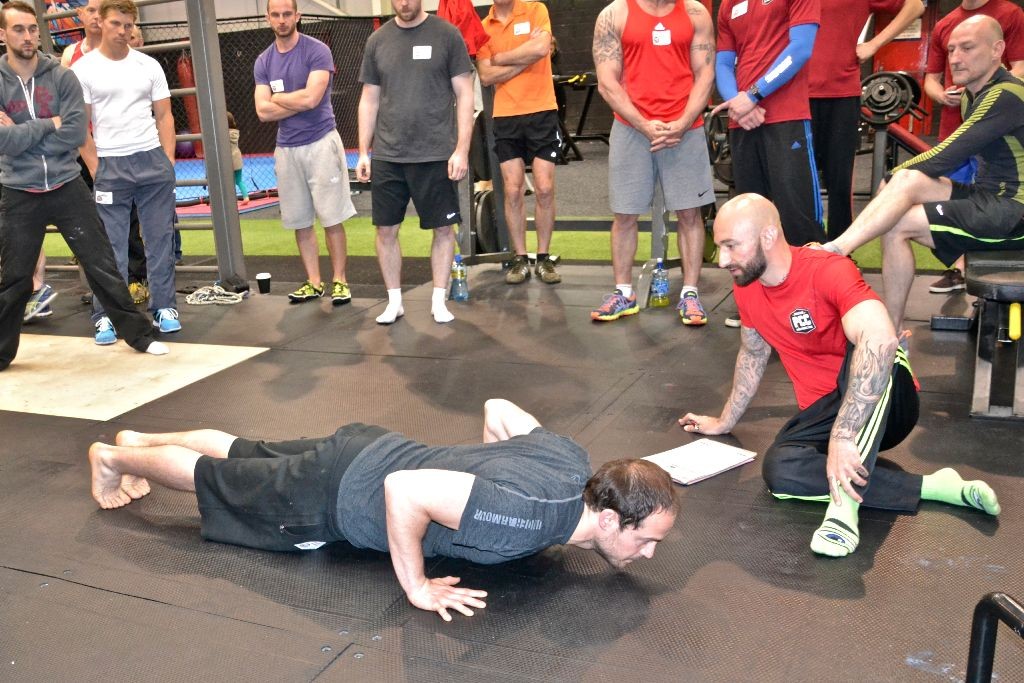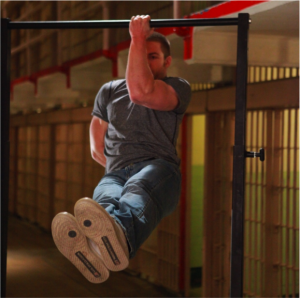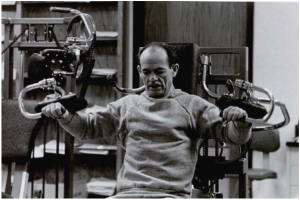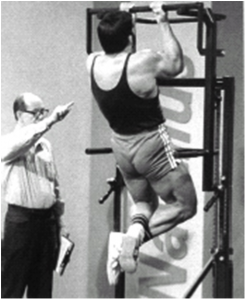I have been practicing calisthenics and strength training for over twenty-five years. When I was a kid, minimalism wasn’t a style of working out: it was the only way. We were a family of five living in a part of Brooklyn that many current Brooklyn residents still don’t even know about. There were no gyms and we were too young for them anyway. My memories of Phys Ed at school are limited to either sitting at my assigned floor spot, or getting yelled at by the psychotic gym teacher. So how did I fall in love with working out at such a young age? Push-ups.
I remember having push-up contests with my brothers on the old linoleum kitchen floor of that house in deep Brooklyn. If one of us would get fifty, someone else would have to get sixty. Then seventy-five. Ninety. I can’t remember what I did this morning, but I sure do remember the way I felt the first time I completed a hundred consecutive push-ups.
To this day, the pushup is still the exercise I’ve performed more reps of than any other. Only now, I can do more variations. These new skills, of course, leads to new challenges. And that’s exactly what’s so great about progressive calisthenics.

Next were pull-ups. There were no shiny packages of bars-that-fit-everywhere back then. No all purpose gyms as seen on TV. My schoolyard looked like a parking lot, not a playground. But we had to get our reps in somewhere, so we put a rusty metal bar in a doorframe. We were old school without even knowing it. After screwing two dark red grommets into the frame, we popped the bar in. It’s still there.
The pull-up contests we had back then were the stuff of legend. Rep after rep after rep. Set after grueling set. My brothers and I would spend hours in that room working that bar. We did it because it was fun. That’s the splendor of training with your body-weight only. Here we were, motivated by nothing other than our innate desire and necessity to move our bodies. This was Mother Nature at her finest: Pulling yourself over a bar. We were alive!
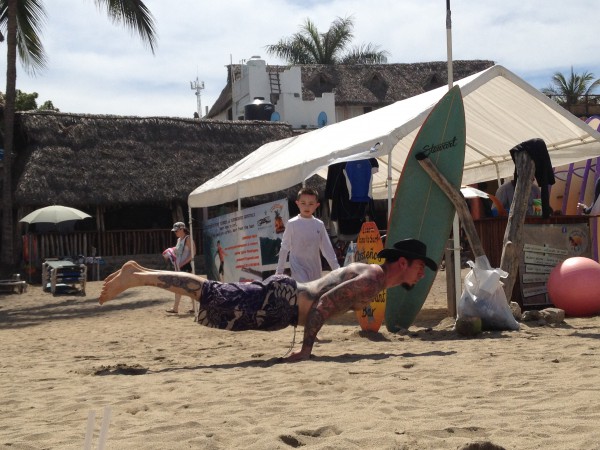
My father, a practitioner of yoga since the 1970’s (way before there were “Yoga” sections at shopping mall book stores everywhere) introduced us to various headstands. One of my favorite teenage memories is returning home late at night to find my Pops doing headstands at 2am! My friends got a kick out of it too. But in all seriousness, there was always a great joy in watching him fully invert himself into a perfect tripod. At over 200 lbs, he was as graceful as a swan. He encouraged us to mess around with balance and flexibility at an early age, which is something I continue to do to this day.
Later on, I started putting extra emphasis on training my legs. I’m a big believer that you’re not strong if you don’t have strong legs. And I must say, I hit the ground running! I had only been doing classic leg exercises like squats and lunges for a few years before I tried pistol-squats. I was instantly addicted to the unique way this exercise combined full-body power with control, and even finesse. Again, I found myself attracted to the purity of this movement: The entire body acting together in harmony to get strong. Just you, your foot, and the earth… nothing more. Simple, yet so complex.
I learned (and I’m STILL learning) how to manipulate leverage and body positioning on single-leg squats to change the exercise. Just like with advanced pushups, there’s a certain beauty, an art form, to these workouts, due to the endless variations allowed by such minimalism.
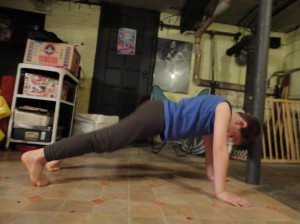
In adulthood, I became deeply immersed in what is often described as “Extreme Calisthenics.” By coincidence (or perhaps cosmic plan), I became a father at the same point in my life. I am inspired now more than ever. These days performing (and studying) advanced moves like muscle-ups, bar levers, and human flags make me feel like a kid again! And of course, seeing my son knock out infinite sets of flawless squats makes me proud as a man.
Now he’s that kid in Brooklyn working on his pushups on the linoleum floor… And I’m that guy practicing headstands at 2am.
Danny Kavadlo, Master PCC, is a Personal Trainer in New York City. He’s worked with hundreds of clients, including athletes, models, and celebrities. He is featured in the Convict Conditioning Series & Raising the Bar, and is known globally as a motivator & leader in the calisthenics community. Learn more at his website: www.DannyTheTrainer.com

